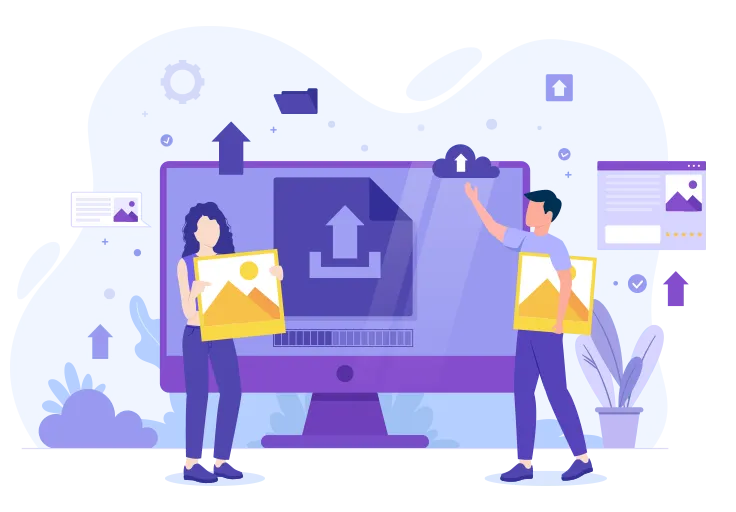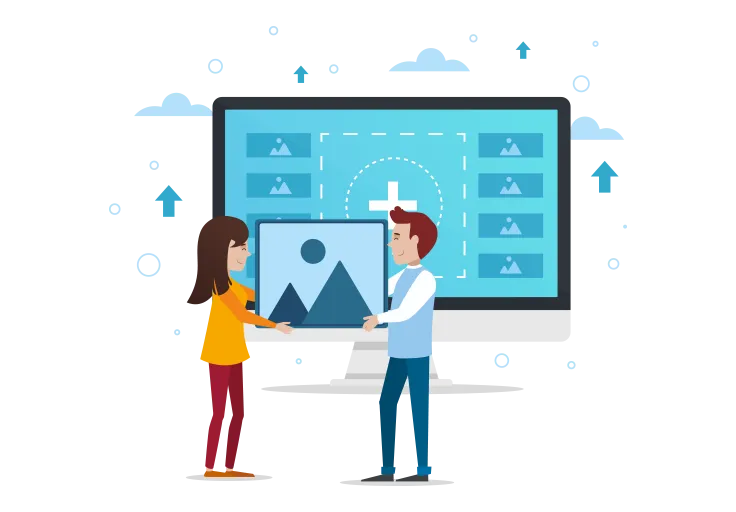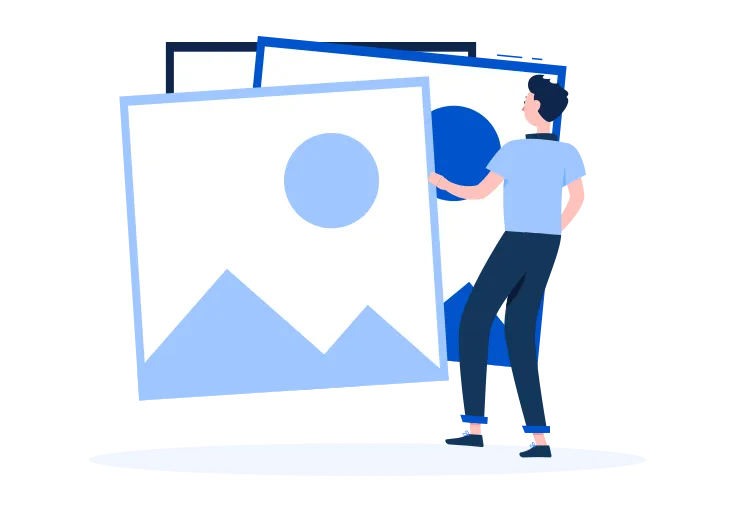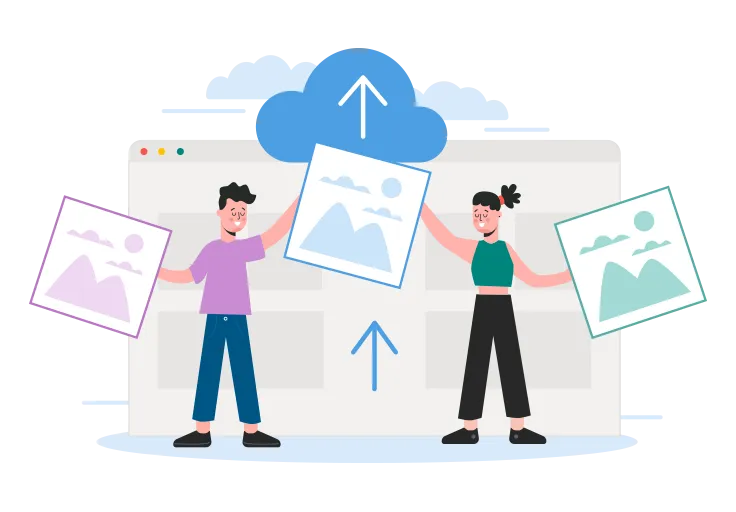
Our PNG to WebP Conversion Guide
Converting between PNG and WebP image formats is quite common for many users. While PNG format offers transparent backgrounds and high-quality uncompressed images, WebP format is preferred to reduce file size and provide faster loading times. In this guide, we will examine in detail how you can convert from PNG to WebP, the differences between these two formats, and in which situations you should prefer WebP.
What Do PNG and WebP Formats Mean?
PNG (Portable Network Graphics) is a format that provides lossless compression and is known especially for its transparency support. Preserving the quality of images is one of the reasons it is popular among graphic designers and web developers. However, due to large file sizes, loading time may be extended, which can negatively affect the performance of websites. On the other hand, WebP is a modern image format developed by Google that significantly reduces file size using both lossy and lossless compression methods. It also offers transparency support. This format is optimized for web pages and provides 25-35% smaller file sizes compared to JPG, and 26% smaller file sizes compared to PNG. Therefore, it is quite suitable for web pages, social media, and digital environments.
images.tr With the help of the WebP converter on the website, you can easily convert your PNG format images to WebP format.

Free, Batch, and Fast PNG to WebP Conversion with images.tr
If you want to convert your images from PNG to WebP, you need a fast and reliable solution. images.tr offers a very advantageous service in this regard. You can save time by enabling batch conversion without wasting time converting files one by one. Moreover, with the platform offering free service, you can convert as many files as you want.
Advantages of images.tr:
- Free Service: Access to all features for free, with no hidden charges.
- Fast Processing: Thanks to powerful servers, even large files are processed instantly.
- Batch Conversion: You can upload and convert hundreds of images at once.
- Quality Control: Preserves image quality during conversion.
How to Convert PNG to WebP with images.tr?
- Upload the PNG files you want to convert using the "Upload" button.
- Select WebP Format: Choose WebP as the output format.
- Start the Conversion: Begin the process by clicking the "Convert" button.
- Download the Results: Download the converted WebP files to your computer.
Batch Image Processing with images.tr: Save Time
The batch image processing feature offered by images.tr provides a significant time saving, especially for those working on large projects. You can convert, resize, and optimize hundreds of images from PNG to WebP at once.
Advantages of Batch Processing:
Process all your images at once instead of dealing with them individually, achieve a consistent appearance by applying the same settings to all images, and speed up your workflow by automating repetitive tasks.

Everything is very easy with images.tr!
Converting from PNG to WebP is quite easy in just a few steps, without needing complex programs or technical knowledge. images.tr offers an ideal solution for both individual users and professionals with its user-friendly interface and fast processing.
How annoying is that, right? You don't have to deal with all these annoying processes. When you perform PNG to WebP on our website, you don't have to wait. You can do your work faster than ever. There is no color or quality loss in your images. Because our website has a system that supports a wide range of colors.
What Are the Differences Between PNG and WebP?
There are some fundamental differences between PNG and WebP. While PNG format offers transparency support and lossless compression, WebP format provides smaller file sizes with both lossy and lossless compression methods, while also offering transparency support.
Advantages of PNG Format:
- Transparent background support
- Lossless compression
- Ideal for high-resolution images
Advantages of WebP Format:
- Smaller file size
- Fast loading times
- Both lossy and lossless compression
- Transparency support
- Animation support


Why Should You Convert from PNG to WebP?
While PNG format preserves visual quality, it offers features such as high resolution and transparency. However, large file sizes can cause web pages to load slowly. In this case, WebP format is ideal for users who want faster loading time and less storage space. WebP maintains the quality and transparency advantages offered by PNG while significantly reducing file size. This is a perfect option for anyone looking to improve website performance.
Common Usage Areas of PNG and WebP
- PNG: Preferred in graphic design, logo, icon, and projects requiring transparency.
- WebP: Used in places requiring smaller file sizes and fast loading times, such as websites, social media, email, and digital photographs. Ideal for modern web applications and progressive web applications (PWA).
Things to Consider When Converting from PNG to WebP
- Browser compatibility: While WebP format is supported by most modern browsers, there may be issues with older browsers. In this case, providing alternative formats for your images might be a good practice.
- Compression level: By adjusting the compression level of WebP, you can strike a balance between image quality and file size. Less compression for high-quality images, more compression for faster loading can be preferred.
- Size optimization: Check the file size after conversion and perform more compression if necessary.


Image Resizing: An Important Step After WebP Conversion
You may need to resize the images you convert from PNG to WebP before using them on your website or other digital platforms. It is especially important to use optimized images to increase the speed of web pages. You should readjust the resolution and dimensions of your visuals to prevent them from taking up unnecessary space.
Impact of PNG to WebP Conversion on SEO
Visual optimization is very important in terms of SEO. WebP format can positively affect your website's SEO performance with its smaller file sizes and fast loading times. Pages that load quickly rank higher in search engine results and improve user experience.
Benefits of Using WebP for SEO:
- Page Loading Speed: Images in WebP format load faster, shortening the overall loading time of the page, which is an important ranking factor.
- Mobile Compatibility: Smaller file sizes provide faster loading on mobile devices, positively affecting mobile SEO.
- User Experience: Fast-loading images improve user experience and increase time spent on the site, which is a positive signal for SEO.

Take Your Images to the Next Level with PNG to WebP
By converting your PNG format images to WebP, you can both reduce file size and improve your website's performance. Tools like images.tr make this process fast and easy, helping you take your images to the next level.
Frequently asked questions about PNG
What is PNG compression?
PNG compression is a lossless process that reduces file size while preserving image quality. This provides faster loading times for websites.
Why are PNG files lossless?
The PNG format stores data without loss during compression. This makes it ideal for graphics and logos.
Which formats can I convert PNG files to?
You can convert PNG files to formats like JPG, WEBP, AVIF, and HEIC. Each format has its own unique advantages.
Why is resizing PNG files important?
Resizing improves web page loading speed and enhances user experience. It's also suitable for social media sharing.
What are the advantages of PNG?
PNG offers transparency support and high-quality lossless compression. This is a major advantage for graphic designers.
Is there quality loss when compressing PNG files?
No, PNG compression is lossless, so image quality is preserved.
What are the benefits of converting PNG files to JPG?
The JPG format offers smaller file sizes, providing faster loading for web use.
Why can PNG files be large?
PNG files can have larger file sizes for detailed images because they use lossless compression.
What does converting PNG to WEBP accomplish?
WEBP offers better compression and provides smaller file sizes with faster loading times.
What are the best compression settings for PNG files?
It's best to adjust the compression level according to the purpose of the image, considering settings that affect image quality.
How does PNG format contribute to SEO?
Optimized PNG files improve web page loading speed, which positively affects SEO.
How can I convert PNG to AVIF format?
You can use online converters or specialized software to convert your PNG file to AVIF format.
How is transparency achieved in PNG files?
PNG format provides transparency support through an alpha channel, allowing backgrounds to appear as desired.
Why is backing up PNG files important?
High-quality and lossless PNG files are important for preserving your projects, so regular backups should be made.
Frequently asked questions about WEBP
What is WEBP?
WEBP is a modern image format that offers high compression rates and quality images. It supports both lossy and lossless compression.
How can I compress WEBP files?
You can compress WEBP files using online tools or software; this preserves quality while reducing file size.
What are the advantages of WEBP?
WEBP provides smaller file sizes and faster loading times compared to JPG and PNG, making it ideal for websites.
Which formats can I convert WEBP files to?
You can convert WEBP files to JPG, PNG, AVIF, and HEIC formats. Each format offers different advantages for specific uses.
Does WEBP support transparency?
Yes, WEBP supports alpha channel transparency similar to PNG but with smaller file sizes.
What browsers support WEBP?
Most modern browsers including Chrome, Firefox, Edge, and Safari support WEBP. However, some older browsers may require alternative formats.
Does WEBP work on mobile devices?
Yes, most modern mobile devices and browsers support WEBP, but compatibility should be checked for older devices.
How is WEBP different from JPG?
WEBP offers better compression than JPG and supports transparency. It provides similar quality images at smaller file sizes.
Can I convert JPG to WEBP?
Yes, you can convert JPG to WEBP using various online tools or software. This often results in smaller file sizes.
What is the typical file size reduction with WEBP?
WEBP typically reduces file sizes by 25-35% compared to JPG, and significantly more compared to PNG files with transparency.
How does WEBP impact SEO and website performance?
WEBP images can improve page loading speed, which positively affects SEO rankings. Faster websites also provide better user experience.
How does WEBP compare to AVIF?
AVIF generally offers better compression than WEBP, but WEBP has wider browser support. AVIF is newer and still gaining adoption.
Can I resize WEBP images?
Yes, you can resize WEBP images just like any other image format using various online tools or image editing software.
Published on .